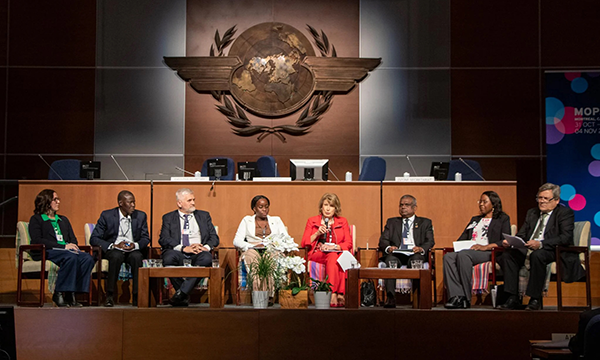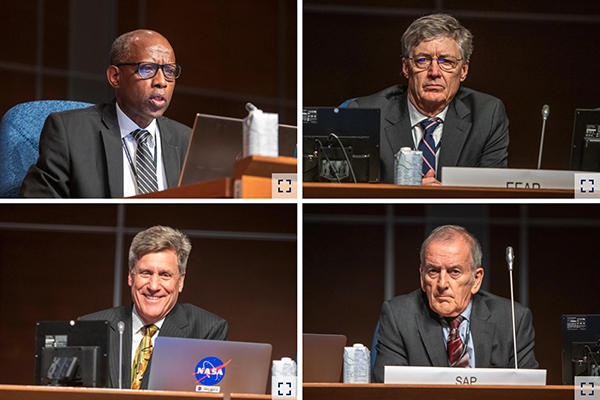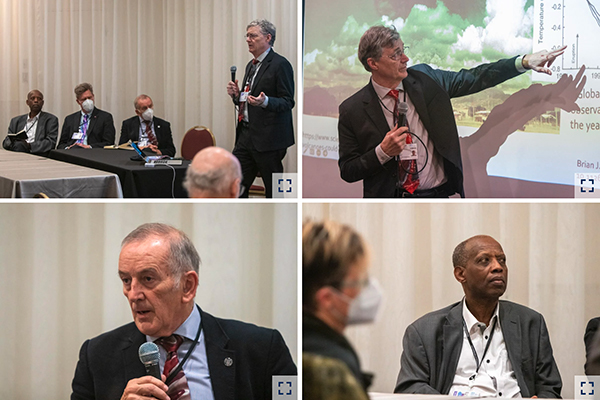A .gov website belongs to an official government organization in the United States.
A lock () or https:// means you've safely connected to the .gov website. Share sensitive information only on official, secure websites.
4 November 2022




The Thirty-Fourth Meeting of the Parties to the Montreal Protocol (MOP34) is being held this week in Montreal, Canada, marking the 35th anniversary of this groundbreaking international treaty.
Thirty-five years ago, the adoption of the Montreal Protocol on Substances that Deplete the Ozone Layer was a turning point in environmental history. When scientists discovered that man-made chemicals used in aerosol sprays and coolants were depleting the earth's protective ozone layer, potentially exposing millions to dangerous ultraviolet radiation, governments took action. On 16 September 1987, governments adopted the Montreal Protocol to control and reduce ozone-depleting substances, mainly chlorofluorocarbons (CFCs) and halons. By 2008, it was the first and only United Nations environmental agreement to have universal ratification.
This year's conference of the Parties coincides with the 2022 Scientific Assessment of Ozone Depletion, a quadrennial report organized and chaired by the Scientific Assessment Panel (SAP) of the Montreal Protocol. The SAP is one of three scientific and technical advisory panels to the Protocol and is co-chaired by NOAA CSL Director David Fahey, Paul Newman of NASA Goddard, John Pyle of the University of Cambridge, and Bonfils Safari of the University of Rwanda. The SAP presented the Executive Summary of the 2022 Assessment to the Parties at the high-level plenary session on Thursday, 3 November, highlighting the major findings from this year's report.
A notable change to the 2022 Assessment is the addition of a new chapter addressing the potential impacts to stratospheric ozone that could be caused by any future climate intervention actions using stratospheric aerosol injection. The chapter reviews our current understanding of potential consequences of climate intervention on the ozone layer and the significant knowledge gaps that are still outstanding. The SAP co-chairs additionally hosted a side event at the conference on Climate Intervention and Stratospheric Ozone to facilitate in-depth discussions about this topic with the delegates.
On Monday, delegates gathered at a side event for the launch of a new book celebrating the 35th Anniversary of the Montreal Protocol. Protecting the Ozone Layer was written by Montreal Protocol veterans Stephen O. Andersen, former Co-Chair of the Technology and Economic Assessment Panel (TEAP), and Marco Gonzalez, former Executive Secretary of the Ozone Secretariat, and edited by former TEAP member and Foam Technical Options Committee Co-Chair Sally Rand. It tells the story of the "inspired treaty design" underpinning the Montreal Protocol's successes and aims to inspire "new ambition" to protect both the ozone layer and the climate.
NOAA CSL's Communications Lead Chelsea Thompson is a contributor to the book, authoring a section on Art in Scientific Communication that highlights graphics, both past and present, depicting aspects of ozone depletion science and the Montreal Protocol.